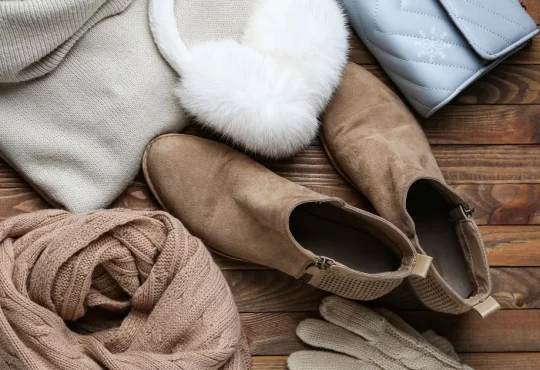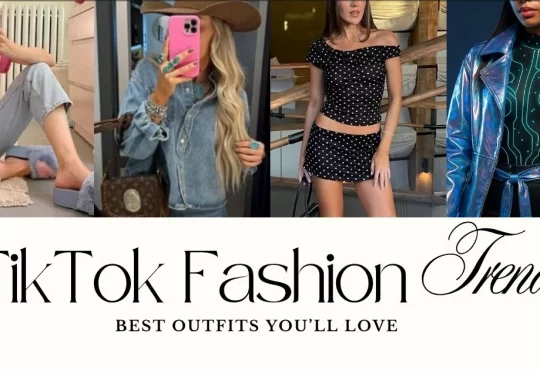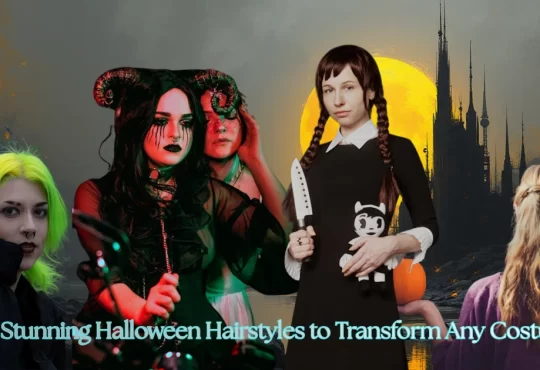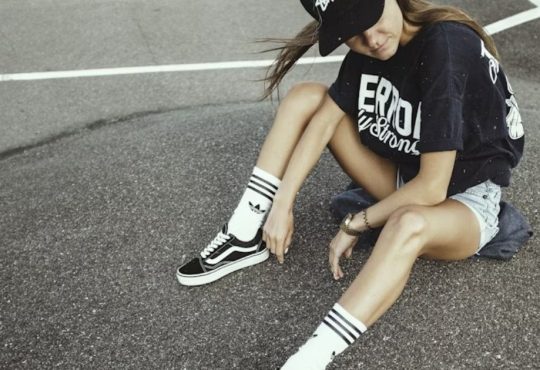In a world increasingly shaped by self-expression, accessories have evolved far beyond function, and no accessory captures this evolution quite like the statement bag. These aren’t just purses, clutches, or carryalls. They’re conversation starters, personality pieces, and wearable art that communicate everything from creative values to cultural roots. Whether crafted by an emerging designer or thrifted from a vintage stall, the statement bags transform an outfit into a narrative. It’s not just about what’s carried inside—it’s about the stories, values, and identities brought to the surface.
What Makes a Bag a Statement?
A statement bag isn’t just a pop of color or an offbeat shape—it’s a conversation starter, a style manifesto, and sometimes, a tiny protest. It steps outside the lines of functional design to announce something: an emotion, an aesthetic, a point of view. Where most accessories blend in, the statement bag insists on being seen. It can be a sculptural silhouette that challenges the norm, or a hand-embroidered pouch whispering tales of heritage and craft. Whether a painted canvas tote covered in pop culture references or a sleek geometric clutch reminiscent of Brutalist design, the statement bag doesn’t just accessorize—it articulates.
Every element—shape, texture, material, context—contributes to the narrative. A stiff, architectural tote might echo Bauhaus minimalism, while a patchworked crochet bag embodies circular fashion and community-crafted charm. Even scale tells a story: oversized bags exude bold confidence, while tiny novelty purses suggest a wink of irony. Often, the wearer becomes co-creator, adding pins, hand-drawn doodles, or customized hardware to turn a bag into a personal archive. These aren’t just accessories but artifacts of mood, mindset, and cultural moment. A statement bag isn’t chosen—it’s curated, styled with intent, and carried like a belief made tangible.
Cultural and Personal Storytelling
Some statement bags speak in the language of lineage. These pieces are rooted in tradition and regional artistry and carry entire histories in their stitches. Consider the Wayuu mochilas from Colombia and Venezuela—vibrant, handwoven carriers embedded with symbolic patterns unique to each artisan. Every geometric motif represents stories of origin, community, or spiritual belief, transforming the bag into a canvas of cultural memory. Similarly, T’nalak bags from the Philippines are rooted in ancestral vision and were crafted by T’boli dreamweavers who transform sacred dream-given patterns into handwoven abaca textiles. These creations don’t just decorate—they document. Every knot, thread, and dye echoes inherited knowledge passed down through generations.
On a more intimate scale, statement bags often serve as autobiographies in accessory form. A thrifted vinyl clutch from the ’90s might recall teenage rebellion or a beloved pop album. A tote covered in hand-sewn patches, enamel pins, and concert memorabilia becomes a fabric-bound scrapbook, layered with emotion and personal lore. These bags aren’t always loud, but they’re always layered. Whether nodding to heritage or capturing fragments of lived experience, each tells a story far deeper than surface-level style. They’re not just carried—they’re worn memories, vessels of identity that hold more than objects; they have meaning.
Designers Who Speak Loudly Through Bags
Some designers transcend functionality, turning bags into bold visual statements. These visionaries treat accessories as expressions of wit, subversion, and selfhood. Anya Hindmarch playfully subverts fashion’s seriousness by blending luxury with everyday humor, drawing on nostalgic cereal boxes, cheeky slogans, and ironic motifs to create bags that charm as much as they challenge convention. Her work proves elegance and humor aren’t opposites—they’re collaborators. Meanwhile, Simone Rocha operates in a dreamier realm, creating pieces that seem spun from gothic folklore.
Her bags, adorned with oversized pearls, delicate tulle, and romantic textures, channel softness into sculptural form—wearable poems shaped by femininity and fantasy. Telfar Clemens, meanwhile, rewrote the rulebook entirely. Dubbed the “Bushwick Birkin,” the Telfar Shopping Bag flipped fashion elitism with its accessible price, unisex design, and cult status. With its accessible pricing, unisex design, and strong community backing, it became more than a bag—a symbol of inclusivity, ownership, and cultural relevance. It doesn’t whisper luxury—it redefines it.
Beyond the fashion establishment, independent designers are also pushing bold narratives through their work. SC103, a New York-based duo, creates bags from off-cut leathers, hammered brass, and recycled textiles, resulting in designs that feel more like assembled artifacts than accessories. Every curve and clasp tells a story of resourcefulness and artistic freedom. Similarly, Khaore approaches bag-making as a conceptual experiment, crafting sculptural pieces that flirt with negative space and redefine the idea of wearability. These aren’t just bags—they’re questions posed in leather and thread. They ask what a bag can be, what it should hold, and who gets to decide.
Why the Statement Bag Matters Now
In a visual-first era, the statement bag is a subtle yet powerful form of self-expression, speaking volumes without saying a word. A distinctive bag cuts through the scroll on platforms like Instagram, TikTok, and Pinterest, where fashion is judged in split seconds. Whether slung over a shoulder in a street-style snap or staged next to a coffee cup in a lifestyle flatlay, it becomes an aesthetic anchor. It’s not just an accessory—it’s a signal. Of individuality. Of curation. Of creative confidence. The right bag can do all the talking in a world where captions are optional and attention spans are fleeting.
But the appeal of the statement bag goes far beyond algorithm-friendly visuals. It’s also part of a broader shift in consumer mindset. As fast fashion fatigue sets in and shoppers grow weary of sameness, there’s a renewed craving for pieces that carry emotional weight. A statement bag isn’t chosen because it’s trendy; it’s because it resonates. Because it feels personal. These bags don’t have relevance—they possess it by design. Whether sourced from a niche designer, passed down as a family heirloom, or handmade during a quiet afternoon, they speak to a desire for lasting meaning in a cycle of fleeting trends.
The New Rules of Wearing One
Gone are the days when a statement bag had to be part of an extravagant, head-to-toe designer ensemble. Today’s is refreshingly democratic—and far more dynamic. The most visually striking styling happens not in excess, but in contrast. A sculptural clutch set against the backdrop of a monochrome outfit suddenly feels like a museum piece in motion. A vintage beaded pouch tossed on with straight-leg jeans and a classic tee becomes a conversation starter without trying too hard. The key is breathing space—letting the bag command attention without shouting over the rest of the look.
High-low mixing isn’t just lowed—it’s encouraged. A rare Telfar tote paired with a $5 thrifted blazer nails the high-low contrast—sharp, cheeky, and unapologetically bold. Fashion gold. A handmade satchel with sharp, minimalist tailoring? Effortless sophistication with a twist of soul. These combinations challenge the old rulebook and rewrite the story in real time. Statement bags are at their best when they disrupt predictability. They’re They’re o punctuate, not blend. To twist the plot, not follow it.
From Runways to Sidewalks: Where Statements Take Shape
Statement bags may have first turned heads on high-fashion runways, but their influence doesn’t stop at the catwalk’s edge. From Coperni’s tic glass Swipe bag and JW Anderson’s alistic pigeon clutch to Thom Browne’s dachshund-shaped handbag, these showpieces once seemed destined for museum displays or editorial shoots. And yet, their power lies not only in their spectacle, but in how they’ve had the everyday carry.
What once felt like couture fantasy thrives on sidewalks, campuses, and subway platforms. Statement bags have become a part of daily style vocabularies, with wearers blending storytelling with utility. Imagine a handwoven basket bag from Oaxaca slung over a denim jumpsuit—where centuries-old craftsmanship collides with street-smart cool in one striking look. Or a clear vinyl tote, practically glowing from within with neon pens, whimsical snacks, and a dog-eared paperback—a still-life in motion. Even a kitschy metal lunchbox repurposed as a purse tells a story of humor, memory, and reinvention. These are not just accessories—they’re experiences carried proudly through commutes and crosswalks.
Where Style Works Overtime
For all their visual intrigue, the most celebrated statement bags don’t make an entrance—they show up for the day-to-day grind. A sculptural swan purse may look like something straight out of an avant-garde gallery, but when equipped with a reinforced base, sturdy handles, a hidden zip pocket, and just enough room for essentials, it earns its place in real life. This is where imagination meets intention.
Contemporary designers are leaning into this hybrid appeal. Brands like Métier London create architectural leather goods with modular interiors that feel more like personal command centers than purses. With its heritage rooted in Belgian craft, Delvaux produces artful bags that hide high-function engineering beneath buttery leather folds. Clyde brings sculpture into soft focus with sleek shapes that still carry the essentials. Even the wildest statement bags—from miniatures shaped like croissants to totes adorned with metal spikes—are being made lighter, brighter, and more ergonomic.
Symbolism in Every Stitch
Many statement bags weave in symbolism, whether intentional or inherited through tradition. Beaded Indigenous pouches may carry tribal affiliations and spiritual motifs. Korean bojagi-inspired bags recall philosophies of wrapping and protection. Embroidered elements, such as evil eyes or celestial bodies, often symbolize protection, manifestation, or connection to cultural rituals.
In a world craving deeper meaning, these symbols give accessories emotional resonance. They’re pretty—they’re they’re.
Quick-Feature Sidebars & Visual Callouts
Pull Quote Carousel Ideas (for social posts or design elements):
- “It’s no bag—the message it carries.”
- “A good outfit speaks. A statement bag shouts—poetically.”
- Fashion fades, stories last. A statement bag tells both.”
- “Some “are made to match. Others are made to matter.”
Future of the Statement Bag
As fashion leans deeper into personalization, expect to see:
- AI-generated bags based on mood boards or custom inputs.
- Wearable tech bags with interactive screens or AR elements.
- Rewilded materials, such as fungi leather or seaweed composites, elevate sustainability through bold design.
But beyond innovation, the emotional thread remains the same: statement bags are ways to share what matters—style-wise, socially, or spiritually.
The Power of the Statement Bag
The art of the statement bag lies in its layered appeal—it’s fashion, yes, but also function, feeling, and identity. These bags tell stories, whether ancient or absurd, political or personal. They challenge fashion to be more than polished perfection. They ask questions, share opinions, and hold space for individuality in an increasingly algorithmic world.
So next time a bag catches the eye—not because it’s treit’s but because it’s intit ‘sing—know this: that’s athat ‘sment. And that’s not.





